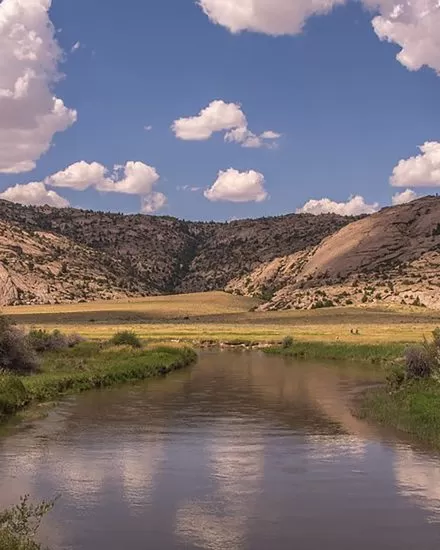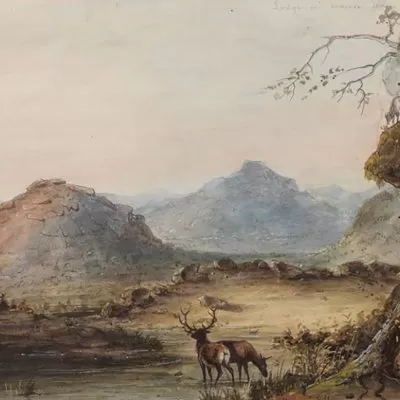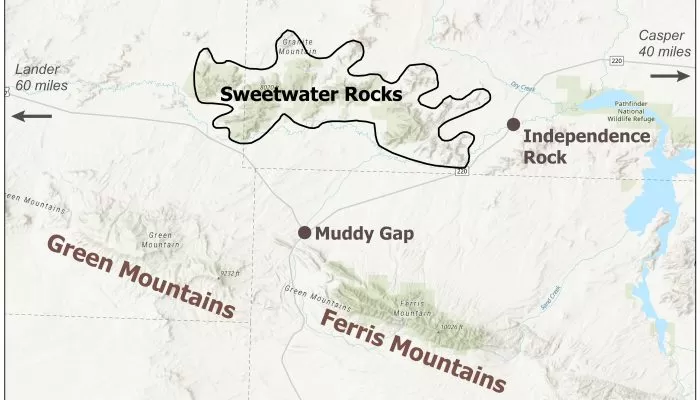Sweetwater Rocks Initiative
Info Lable #1
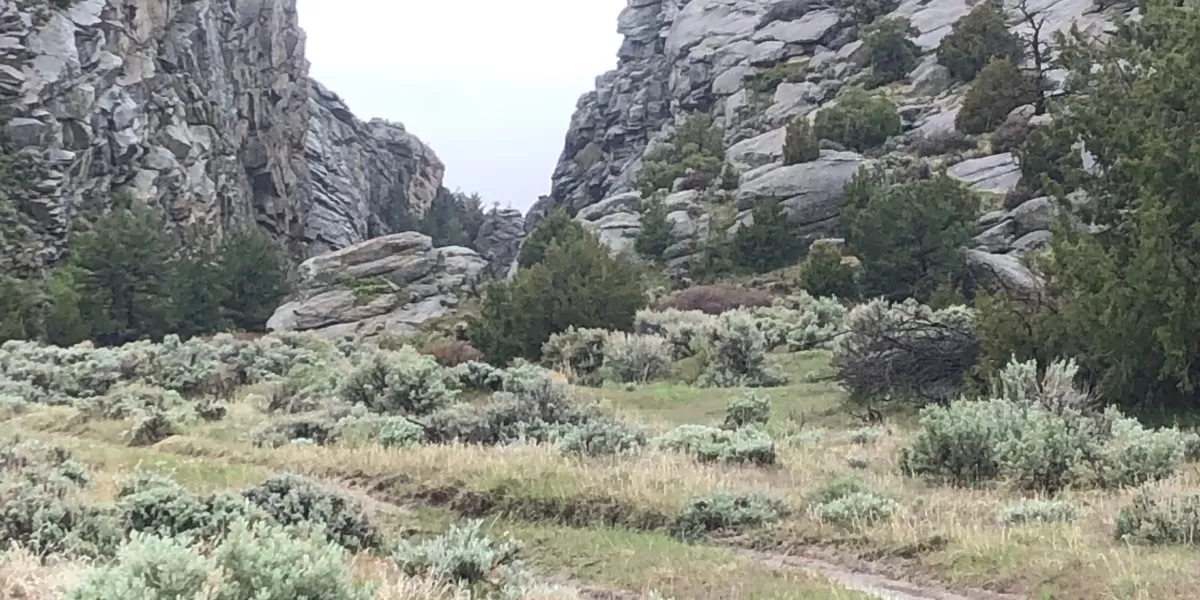
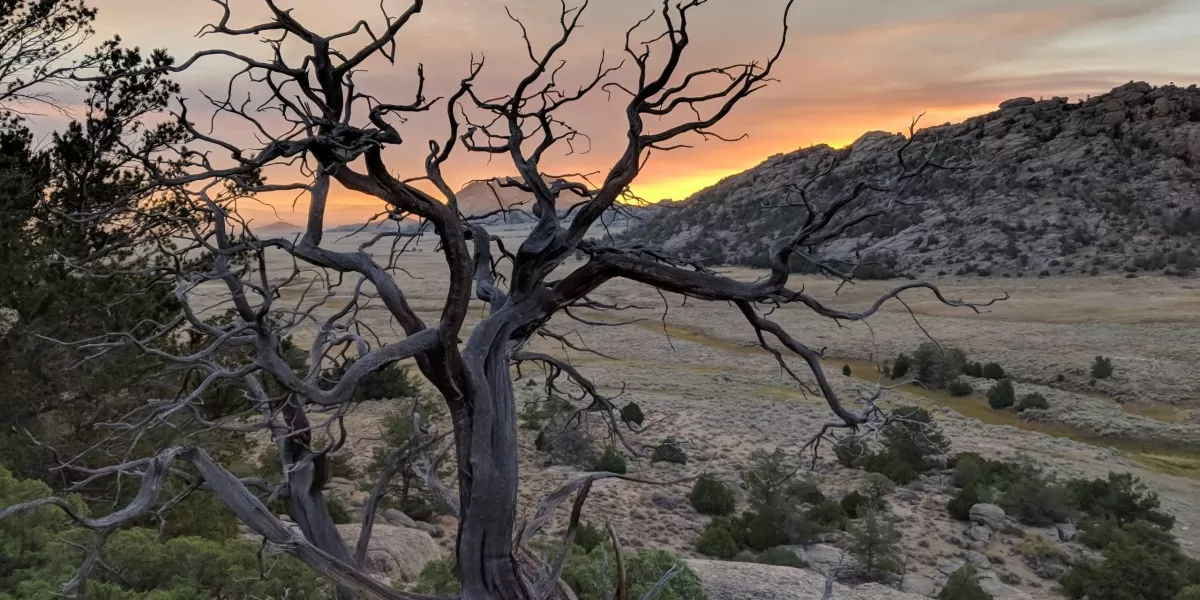
Bighorn sheep are native to the Sweetwater Rocks. Returning wild sheep to the Rocks will create an additional healthy population in Wyoming, provide increased hunting opportunities, and enhance habitats that support numerous species in addition to bighorn sheep.
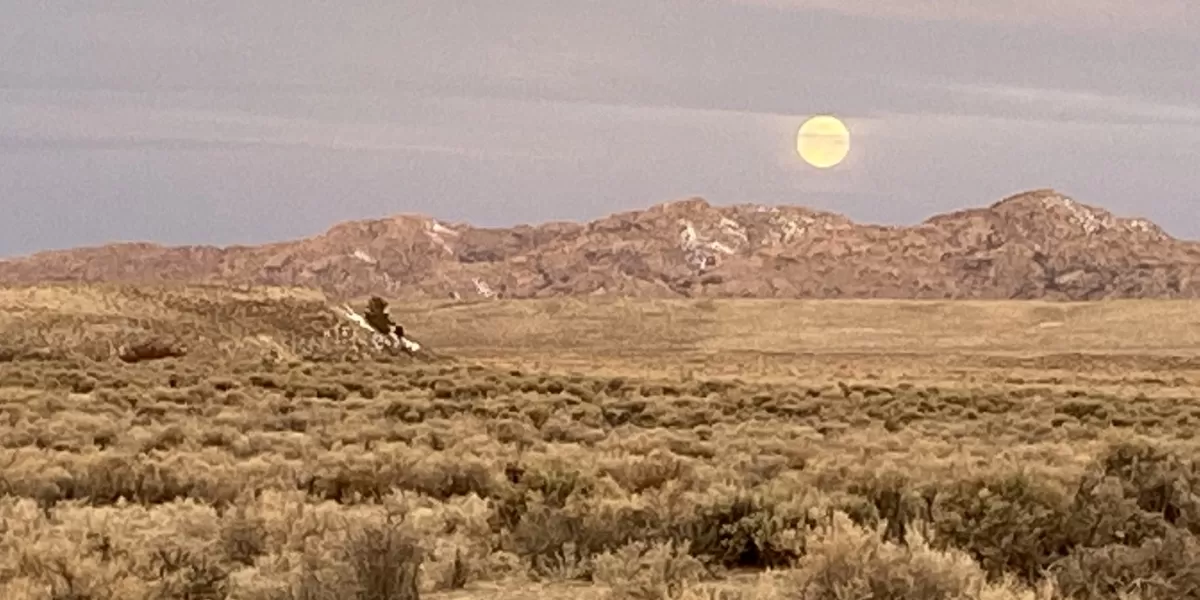
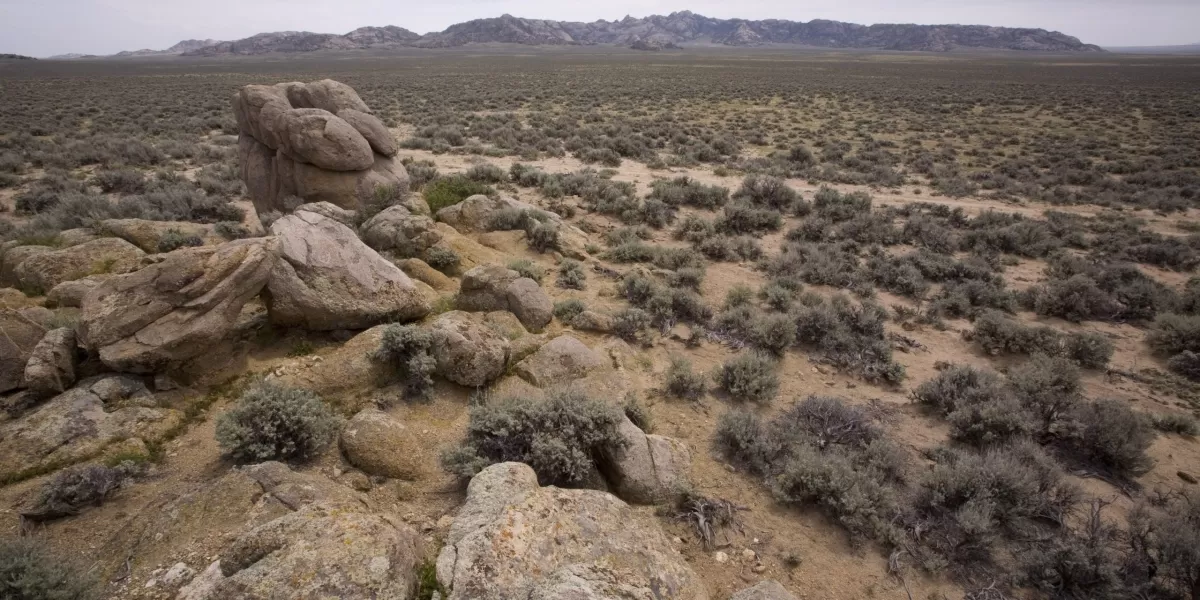
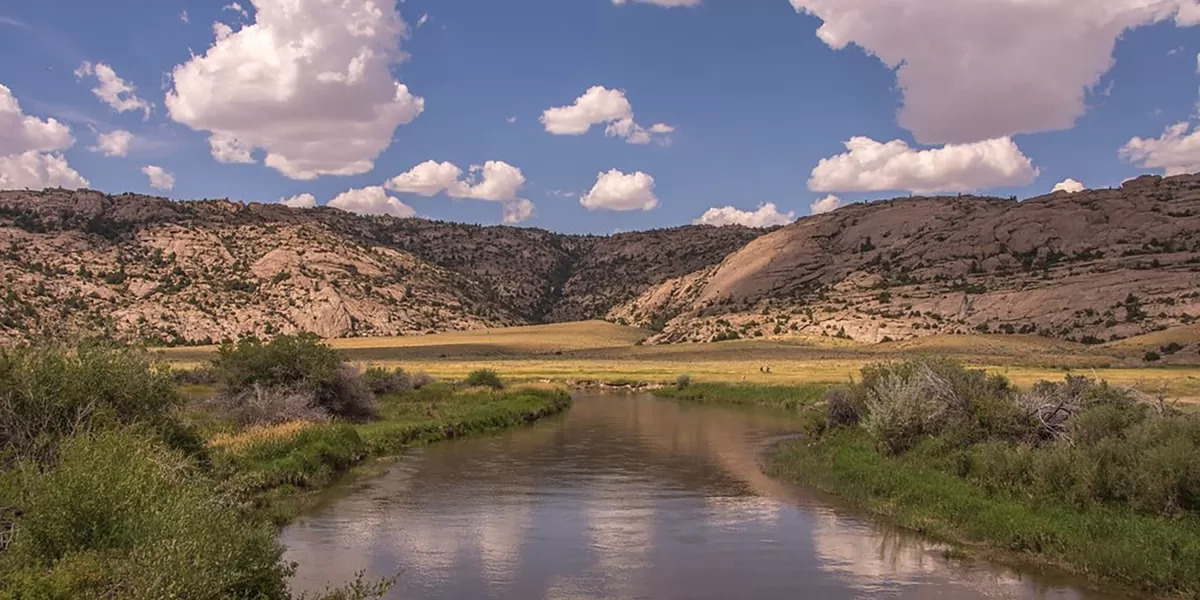
The decision for reintroduction of bighorn sheep rests in the authority of the Wyoming Game and Fish Commission. The Wyoming Game and Fish Department lists the Bighorn Sheep a species of Greatest Conservation Need based on the Native Species Status Matrix in the Wyoming State Wildlife Action Plan – 2017.
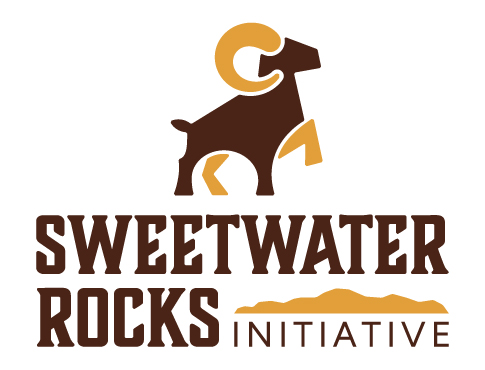
Sweetwater Rocks Fundamentals
#1. Bighorn sheep are native to the Sweetwater Rocks. Returning wild sheep to the Rocks will create an additional healthy population in Wyoming, provide increased hunting opportunities, and enhance habitats that support numerous species in addition to bighorn sheep.
#2. No federal domestic sheep allotments exist within the 73,101-acre perimeter of the Sweetwater Rocks. The risk of a wandering bighorn sheep outside this perimeter and commingling with domestic sheep has the probability of occurring once every 33 years.
#3. Bighorn sheep on federal land do not alone constitute any special federal actions by their reintroduction or ongoing management. This includes any alterations to cattle grazing leases administered by the Bureau of Land Management. Wyoming BLM State Director Andrew Archuleta supports the reintroduction.
#4. The decision for reintroduction of bighorn sheep rests in the authority of the Wyoming Game and Fish Commission. The Wyoming Game and Fish Department lists the Bighorn Sheep a species of Greatest Conservation Need based on the Native Species Status Matrix in the Wyoming State Wildlife Action Plan – 2017.
Alfred Jacob Miller Painting – Formations of Rock Near the Sweet Water, 1837
Initiative Updates
March 25, 2024
Wyoming Governor Gordon signed SF0118 into law on Friday, March 22 following the legislative budget session. The bill was titled the “Bighorn and domestic sheep relocation – federal action” bill.
Sponsored by Senator Hicks and Representative Western, the law provides assurances to grazing permit holders on Bureau of Land Management lands within the Sweetwater Rocks Cooperative Review Area that should federal actions occur to reduce their allotted use and available forage of their permit as a result of the presence of bighorn sheep, that the Wyoming Game and Fish Department will remove the bighorn sheep from the Area.
The law addresses the concerns of agriculture producers within the boundaries of the Sweetwater Rocks Cooperative Review Area seeking assurances that their BLM grazing permits will not be negatively affected by a reintroduction of bighorn sheep.
The law codifies actions already occurring by WGFD personnel to provide the expedient removal of bighorn sheep that stray outside the Sweetwater Rocks Cooperative Review Area. The law contains appropriations of $100,000 for the wildlife/livestock disease research partnership and $50,000 for the Wyoming Department of Agriculture rangeland health assessment program.
The law has a delayed start of January 1, 2026 to allow for any federal law development to compliment these state-level assurances and allow for source herd monitoring and rangeland and habitat improvements within the Sweetwater Rocks.
Under the Wyoming Plan, a Cooperative Review Area is an “area of suitable bighorn sheep range where proposed changes in bighorn sheep management or domestic sheep use will be cooperatively evaluated,” and where “cooperative will be sought in these areas to implement practices benefiting one or both species.”
The Wyoming Wild Sheep Foundation will work cooperatively with the Bureau of Land Management, WGFD and WDA, and other conservation organizations to provide on-the-ground habitat enhancements including water development, weed and vegetation treatments, and fence replacement to new wildlife friendly fencing.
The reintroduction proposal remains active within the Wyoming Game and Fish Commission, who will have the ultimate say on the timing of the approval for a reintroduction.
Send a Letter of Support
Donate to Help Restore Wild Sheep to the Rocks
Information and reference materials
Reference Materials
Step into our resource Vault to use our library of documents pertaining to the reintroduction of BHS into Sweetwater Rocks
Links to our:
SWR Suitability Assessment – Wagler, Monteith 2021
Director Nesvik Letter to Livestock Producers
Pathfinder Ranches Reintroduction Letter
More Reference Documents
“A Sweet Homecoming”
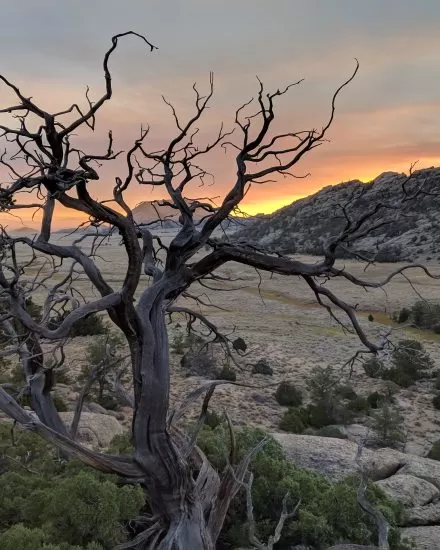
The effort to bring bighorn sheep back to Sweetwater Rocks has spanned decades. The latest plan is poised for success.
Author – Kaelyn Lynch
In 1812, when Robert Stuart traversed Sweetwater Rocks in central Wyoming on what would eventually be known as the Oregon Trail, he would have seen the same bare-knuckle granite hilltops and windswept, shrub-dotted flats there today. Despite the development surrounding it, the Sweetwater Rocks remain a sliver of the American West as it mostly was 200 years ago.
One thing about the Sweetwater Rocks Stuart saw is drastically different today. In his writings, Stuart noted “innumerable flocks” of bighorn sheep. They crowded the banks of the Sweetwater River, deftly hopped between perilous rocky outcroppings at Devil’s Gate, and grazed lazily on the long grasses of the prairie. Decades later in 1835, trapper Osborne Russell, another explorer in the region would confirm Stuart’s observations, writing, “An eye could scarcely be cast in any direction around, above, or below without seeing the fat sheep gazing at us with anxious curiosity.”
By 1907, a traveler to Sweetwater Rocks wouldn’t see a single wild sheep. Decimated by a combination of overharvesting, habitat degradation, and diseases from domestic flocks, wild sheep have remained absent from Sweetwater Rocks for much of the past century. And while previous attempts to reintroduce these emblematic animals have fallen short, a renewed effort promises to return them to their traditional home. “If not for the hand of humans, the sheep would still be there,” says Matt Hoobler, a board member of the Wyoming Wild Sheep Foundation and one of the leaders of the Sweetwater Rocks bighorn restoration effort. “Now our efforts have the power to bring them back and the Sweetwater Rocks is the ideal location.”
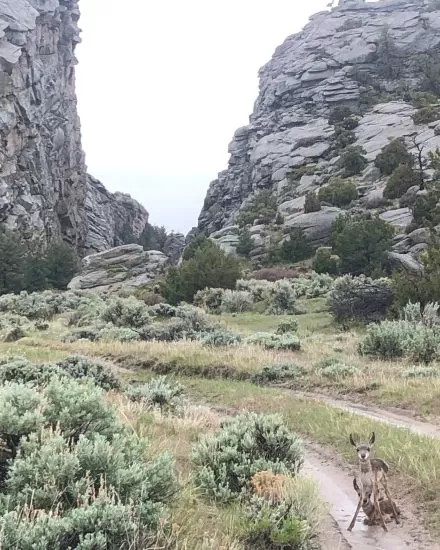
Four species of wild sheep once inhabited a vast swath of Western North America, stretching from southern Canada into northern Mexico. While exact numbers are hard to come by, respected naturalist Ernest Thompson Seton once estimated that at around 1800, as many as two million wild sheep roamed the high deserts, low shrublands, and mountain peaks of North America.
While indigenous peoples were known to subsist off wild sheep—the Duka Dika, also known as Sheepeaters, were ancestors of the Mountain Shoshone in Wyoming who were renowned for their expertly-tanned sheepskin clothing and bows constructed from the iconic horns—the demise of the animals correlated with European encroachment into the West. In addition to being relentlessly pursued for their high-quality meat and hides, wild sheep soon faced competition for food and water from livestock. Their biggest vulnerability, however, came from their predisposition to respiratory infections: diseases passed from contact with their imported domestic counterparts ran rampant, and even a single infected animal could mark the end for an entire herd. By 1960, the west-wide population had dwindled to about 25,000 individuals, about one percent of their former numbers. One species, the Audubon’s bighorn, went extinct entirely.
It didn’t take long for naturalists to realize there was a problem. Restrictions on harvesting and statutes to further habitat protection date back as early as 1870 in the U.S. and Canada, but they did little to quell the sheeps’ demise. In the 20th century, newly founded state and federal wildlife agencies, nonprofits, and concerned hunters realized the need for a more aggressive intervention. The solution was translocation, or the transplanting of wild sheep from healthy herds to an area where they once thrived. The efforts have produced iconic photos of sheep slung under helicopters, waiting to be deposited into some of the country’s most remote and inaccessible landscapes.
The first known sheep translocation was in 1922, when 20 bighorns from Alberta, Canada were released into Montana and Custer State Park in South Dakota. From then until 2015, over 1,460 translocations have moved an estimated 21,470 animals. The results of these efforts have varied: A review of 100 sheep translocations in six Western states between 1923 and 1997 clocked a success rate of only 41 percent. This, in part, was because of the process of trial and error; mistakes included mixing sheep from various source herds and dropping highland sheep species into lowland environments and vice versa. Habitat degradation from human development and livestock grazing also made it tough for the newly resident sheep to survive, as did the danger of liaisons with domestic sheep. But over time, with new technology and new knowledge, the success rate grew. Today, wild sheep are largely considered a poster child for conservation success, with populations rebounding to more than 80,000 animals spread across 15 U.S. states, two Canadian provinces, and six states in Mexico.
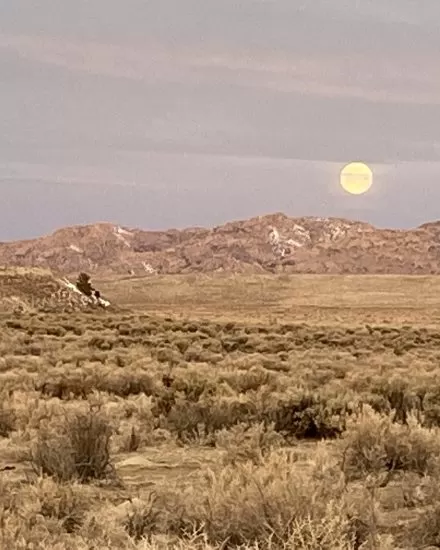
Sweetwater Rocks is no stranger to these restoration efforts. The first attempt was in 1944, with the relocation of seven desert bighorns from Nevada. “That was a mistake,” says Kevin Hurley, a former wildlife biologist for the Wyoming Fish and Game and Fish Department (WGFD) and the vice president for conservation at the Wild Sheep Foundation. Although this area of Wyoming can be considered the high desert, these species of bighorn were not adapted to our cold temperatures and higher elevations, and the animals quickly died off. A herd of 20 Rocky Mountain bighorns fared better, growing their numbers to between 40 and 50 by the 1960s, but began to dwindle through the 70s due to transplanting high elevation sheep not conditioned for the low elevation phenology. By 1980, the last of them were gone.
In the 1970s, a Bureau of Land Management (BLM) biologist named Jack Welch conducted an analysis to determine how many wild sheep Sweetwater Rocks could theoretically sustain and came up with a number around 400. That kicked off a translocation effort by the BLM and WGFD that stretched from the mid-1980s all the way through the 1990s. After more than a decade’s worth of habitat assessments, discussions with local landowners, public commentary, and obtaining the necessary approval and funding, the plan was on the verge of adoption, with 20 California bighorn slated to be rehomed in Sweetwater Rocks in early 2000. But, on the eve of success, a handful of ranchers petitioned, spreading what advocates called, “faulty information” to other ranchers in the region, including mistaking the proposed California bighorn transplants from the Sierra Nevada, which are federally protected species that landowners feared could bring more government restrictions. After a petition circulated at a public meeting calling for the end to the plan, citing primarily concern of increased restrictions on federal grazing allotments, the proposal was dropped.
Plans to revive Sweetwater Rocks’ wild sheep would lay dormant for over 20 years. Then, in July 2021, a new proposal surfaced. But this time, it wasn’t from federal authorities, but a landowner. Pathfinder Ranches is a conglomerate composed of around a dozen historic ranches in central Wyoming, overseeing some 630,000 acres of rangeland and—importantly—the only remaining federal domestic sheep allotments in the vicinity of the Sweetwater Rocks. Their mission is to balance successful agricultural business with wildlife habitat restoration. In June 2021, Pathfinder sent a letter to WGFD requesting permission to formally pitch a Sweetwater sheep restoration plan at their meeting the following month. Pathfinder’s core belief—that the age-old rivalry of agriculture versus wildlife doesn’t have to exist—is central to the renewed effort. Pathfinder did outline two conditions for its continued support of the initiative: first, the process must be open and transparent, and second, any reintroduction must be designed and initiated in a way that would not harm its ranching neighbors.
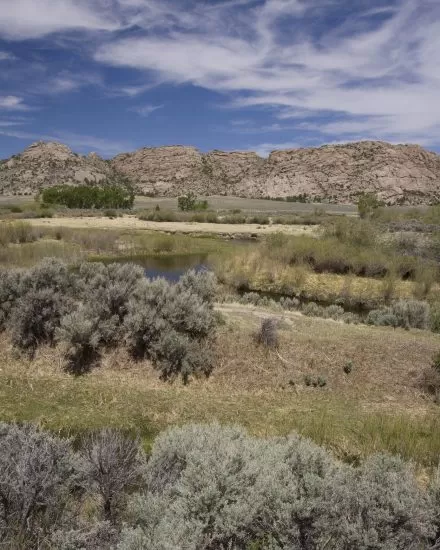
With a spate of failed past attempts, how could this one be any different? Pathfinder and their neighbors and partners, including the historic Split Rock Ranch and the Wyoming Wild Sheep Foundation, believe that technology and knowledge has evolved significantly from two decades ago, and all are determined to learn from past mistakes. The first step was to prove that Sweetwater Rocks remains a suitable sheep habitat. From the inception of the renewed effort to see wild sheep roam the Sweetwater Rocks once again, the Wyoming Wild Sheep Foundation was a central ally to the effort—a partner with a razor-sharp focus on wild sheep conservation and keen dedication to science.
At the request of the Wyoming Game and Fish Commission, scientists from the University of Wyoming and the WGFD analyzed Sweetwaters’ habitat and the risk that wild sheep would contact domestic sheep. To do so, they used data from GPS collars to track 111 bighorns in the Ferris-Seminoe area, a region adjacent to Sweetwater that shares its high-desert habitat dotted with rocky outcroppings and sagebrush grasslands. Like Sweetwater, the Ferris-Seminoe sheep had disappeared a century ago, until the early 2000s, when a series of translocations attempted to restore the herd. Since then, the population has thrived, alongside the cattle operations that dot the landscape—there’s now around 300 animals, providing a crystal ball for how the Sweetwater Rocks wild sheep might interact with their new home.
The assessment, completed in December 2021 by nationally recognized ecological researchers Monteith and Wagler, concluded that Sweetwater Rocks has ample habitat to support wild sheep year-round without encroaching on domestic livestock or existing wildlife. It also found that the risk of contact with domestic sheep was minuscule, at just .03 contacts per year, or one every 33 years for a herd of 50. At that rate, with about a quarter of contacts potentially resulting in disease, the risk of a deadly pathogen outbreak was once every 141 years. Even when adjusted for a population of 300, the risk of contact number was less than half of the 0.37 of the nearby Ferris-Seminoe herd.
With solid scientific backing that wild sheep in Sweetwater Rocks posed little risk to landowners and the bighorns themselves, WGFD went about asking ranchers for their opinion in a series of one-on-one meetings and public forums throughout 2022. They found that when presented with the facts, 48 percent of landowners in the area were in favor of the plan, with only 22 percent opposed and 22 percent neutral. The concerns that were raised echoed those from previous decades: that government authorities and environmental NGOs would use bighorn sheep protection as an excuse to curtail grazing permits, that sheep would be a cover for failed wild horse policies, and that their livestock would have new competition for water and grass.
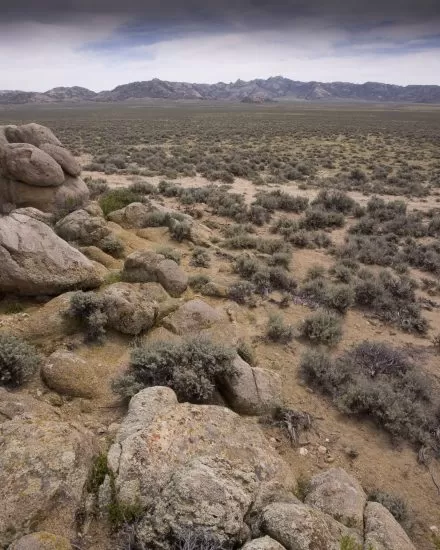
Jim Collins ran cattle in the Ferris-Seminoe region for more than 30 years and has spent decades as a liaison between landowners, the Wyoming Wild Sheep Foundation, and federal and state government agencies. He says that ranchers’ concerns are understandable, based on unkept promises elsewhere. “The government has the ability to stack control upon control,” he says. “The mindset that causes fear and panic comes with a history of some real problems with some of these government regulations.”
Collins emphasizes that what makes the current effort different is the Wyoming Bighorn/Domestic Sheep Plan, a 2015 statute that directs the WGFD, the Wyoming Board of Agriculture, and Wyoming Livestock Board to all act together to maintain healthy bighorn sheep populations alongside economically successful livestock operations. The plan recommends discussions from all parties related to the overlap of habitat use between any bighorns that would interact with domestic sheep. It also brings together numerous stakeholders, including the Department of Agriculture, the Stockgrowers and Wool Growers Associations, and the Wyoming Wild Sheep Foundation, into the Wyoming Bighorn/Domestic Sheep Interaction Working Group. With the addition of the BLM, other private landowners, and NGOs, and the process of getting sheep back in Sweetwater is a kaleidoscope of various opinions and priorities.
“The [WGFD] in its 100-year history has worked closely with private landowners,” says Zach McDermott, Wyoming Wild Sheep Foundation president. “There’s not always perfect alignment and agreement, but the WGFD is very sensitive and cognizant of landowner wants and wishes because half of the state is private land, and the other half is public.” Sweetwater Rocks also cleaves roughly along these lines: of the 73,000 acres predicted to be the sheeps’ core range, about 60 percent of the land is located within one of the region’s 19 federal grazing allotments.
The plan’s advocates cite Ferris-Seminoe as proof this approach can work. Jim Collins says his 500-cattle strong operation never faced any issues, whether in competition for grazing or reduced federal allotments, once the sheep were reintroduced. Matt Hoobler affirms that Pathfinder had a similar experience in the Ferris-Seminoe area.
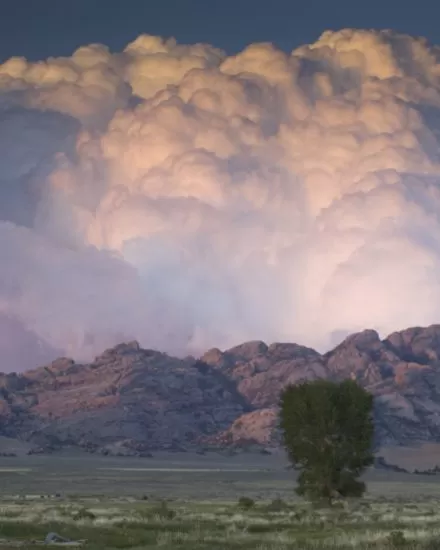
The more complicated problem is domestic sheep. While wild sheep rarely harm their domestic cousins, they pick up deadly pathogens that can wipe out whole herds, necessitating coordinated efforts to keep them separate. Luckily, Sweetwater Rocks’ natural topography helps with this issue. The 2021 assessment noted that the area is surrounded by mostly flat shrubland that wild sheep are unlikely to use and is bounded by major highways, providing a natural buffer between wandering wild sheep and domestic herds. Currently, none of the federal grazing allotments that overlap with the animals’ predicted core range are slated for sheep. On the off chance a bighorn does go walkabout, WGFD director Brian Nesvik affirmed in a letter to landowners that the Department would be responsible for removing any sheep that interact with domestic herds, as per they have a current policy to remove bighorn sheep that are suspected of interacting with domestic sheep. For the Sweetwater Rocks herd, the WGFD will be the mechanism of separation and remove or relocate any bighorn sheep outside of the designated boundary.
Beyond a neutral effect on ranching operations, Pathfinder Ranches, Split Rock Ranch, and other landowners stand to benefit from translocation of wild sheep. Landowners note that fostering a more diverse ecosystem, brought about by the restoration of sage grouse, native plants, elk, and wild sheep, increased the valuation and carrying capacity of the land. By building a sound ecological environment, agriculture benefits, as do wild species.
Another area where landowners can directly profit is through hunting. Bighorn sheep are considered the pinnacle of big-game hunting in the United States, both because opportunities to harvest them are scarce, and most involve weeks of pursuit in the backcountry, requiring an abundance of time and physical fitness. Wild sheep tags are typically run through a lottery system, and it can take decades to draw. Special conservation tags can cost hundreds of thousands of dollars—the most expensive permit to date sold in Montana in 2013 for $480,000.
In other areas where wild sheep have been reintroduced, communities have seen huge economic benefits. In Mexico, where the Wild Sheep Foundation has spent decades restoring herds, local landowners take home between $90,000 to $360,000 per hunt, when adjusted for purchasing power. Collins, Hoobler, and the Foundation note that land that holds transplanted herds in Ferris-Seminoe, Devil’s Canyon, and around Laramie Peak are rapidly becoming premiere hunting destinations, with landowners are able to charge for access. Sweetwater Rocks could be even better, as some sections would offer more accessible expeditions to older hunters who can no longer tolerate a 10-day backcountry foray.
